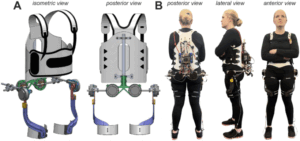To better link muscle-tendon mechanics to energy expenditure, this investigation studied participants as they cyclically contracted their calf muscle in a manner that mimics key aspects of locomotion: constant cycle-average force and work. Overall, decreasing the fraction that the muscle is on per each on-off cycle (i.e., duty factor) caused greater tendon stretch and muscle fascicle shortening, leading to increased energy expenditure. Thus, by accounting for structural (e.g., tendon stiffness) and functional (e.g., duty factors) parameters during walking and running, researchers may better explain metabolic energy changes across locomotor tasks and animal species. Check out the accepted proof here!

